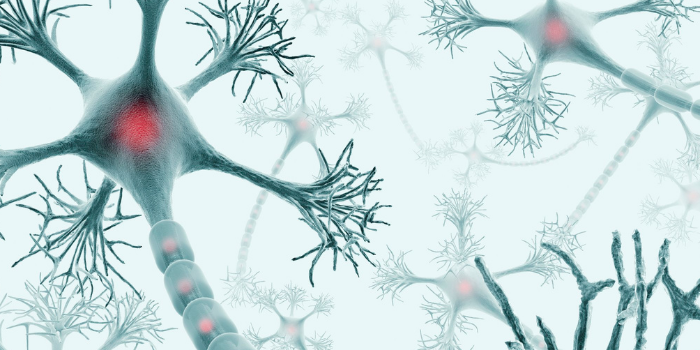A paper published in the journal Brain, on 30 April 2019, has identified a brain disorder that appears to mimic the clinical features of Alzheimer’s disease. Known as LATE (Limbic-predominant Age-related TDP-43 Encephalopathy) it appears to be linked to the accumulation of a protein, TDP-43, in the brain, while Alzheimer’s disease is more commonly linked to two other brain proteins – amyloid and tau.
The authors of the report say that LATE appears to affect the “oldest old”, people over 80, based on work that looked at evidence from thousands of post-mortem results.
It raises interesting and challenging questions around diagnosis and how to test people non-invasively and cost effectively. It also raises questions around clinical trials and ultimately, it will pose questions around treatment options. It is not yet known how many people may have LATE.
Kate Swaffer, Chair and CEO, Dementia Alliance International said:
“This latest research is of great interest to Dementia Alliance International members, especially as many are regularly challenged about the validity of their own diagnoses, especially those living with younger onset dementia. Whilst it relates to older adults with cognitive decline, the more research that supports a more accurate diagnosis of Alzheimer’s disease, will not only lead to more targeted research and hopefully treatments, but will ultimately be reflected in increasing the accuracy of all dementia diagnoses.“
Dr Alireza Atri, Co-Chair of ADI’s Medical & Scientific Advisory Panel, said:
“This timely consensus workgroup report supports an accumulating evidence-base regarding the importance of determining the independent and inter-related contributions of multiple disease pathways to late-life cognitive decline, impairment and dementia. Future treatments are unlikely to be highly effective unless we learn to more accurately diagnose and use combinations of targeted and personalized approaches to impact all the factors relating to aging, Alzheimer’s disease, and non-Alzheimer’s disease that often combine to cause symptoms in an older individual.”
Dr Atri offers a more detailed review of the report below:
Never Too LATE to Improve Our Understanding of Conditions and Diseases that Cause Late-Life Cognitive Impairment and Dementia
This report, a Workgroup diagnostic guideline paper (Nelson et al. Brain 2019), provides an important pathway to advance understanding and research on conditions and diseases that impact late-life cognitive decline and dementia syndromes (changes in cognitive abilities sufficient to impact daily functions and behavior). This important evidence- and expert-based research formalizes terminology and provides consensus guidelines for diagnostic and staging criteria for a protein-related disease (aka. proteinopathy) due to TDP-43 protein that has been, in the last 15-25 years, increasingly reported to produce Alzheimer’s disease (AD)-like dementia symptoms by causing conditions such as Hippocampal Sclerosis and Age-related TDP-proteinopathy. The Workgroup coined the term LATE (Limbic-predominant Age-related TDP-43 Encephalopathy) for such TDP-43 proteinopathy conditions that cause cognitive impairment and dementia (CID) and provides evidence to support that LATE is a disease that may cause or contribute to CID in 15-20% of older-old individuals (those older than 80-85 years of age).
In the last two decades, multiple lines of evidence, particularly from long-term brain donation autopsy research studies, have made it increasing clear that cognitive and behavioral changes and symptoms in older-old individuals, that are sufficient to produce CID syndromes, are due to a confluence of multiple conditions that impact cognitive functions. While brain changes due to AD, defined by the presence of amyloid-beta protein plaques and tau-protein tangles, are commonly observed in autopsy studies, there is likely more often an interaction of several conditions, such as vascular brain injury (VBI), and other proteinopathies such as those caused by alpha-synuclein proteinopathy (Lewy Body Disease) and TDP-43 proteinopathy (LATE), that combine to produce symptoms in the older-old.
Therefore, in a substantial number of older-old individuals, what can appear in the clinic to be very similar to CID symptoms due to Alzheimer’s can be caused by LATE or by the combined effects of LATE with AD and related conditions. As well as sharing common symptoms with typical dementia due to AD, particularly problems with learning and forming new memories, the report also outlines how LATE shares some common risks with AD (such as age and genetic features) and findings on brain imaging, such as shrinkage of hippocampus and medial temporal lobes. The Workgroup’s formalized recommendations and diagnostic criteria are important to promote awareness in the medical, scientific, and patient communities and in the general public. The guidelines are also crucial to stimulate interdisciplinary research to better diagnosis and treat LATE during life, including by use of biomarkers to exclude AD (e.g. spinal fluid or PET scan signatures related to AD), and the development of specific LATE-related biomarkers, and prevention and treatment approaches. It’s never too late to learn and be smarter and wiser about investigating multi-factorial approaches to combat the complex and inter-related conditions and diseases that causes CID.


